Enhancing Diver Safety: The Vital Role of ROVs in Commercial Diving
Explore the risks involved in commercial diving, and how ROVs contribute to safer operations by prioritizing diver well-being.

Image showing the screen of a Deep Trekker underwater ROV controller. The camera is looking at coral with fish in the background.
This article was first published on
www.deeptrekker.comWhat is Commercial Diving
The commercial diving industry plays a significant role in various sectors, including ocean exploration, infrastructure development, aquaculture, military operations, and salvage missions. Specializing in underwater operations, divers undergo extensive training to perform a wide range of challenging tasks in hazardous conditions.
Whenever there are leaks, crashes, sinkings, or fires in the marine environment, commercial diving crews are called to resolve these issues. Despite the inherent risks and hazards involved, commercial diving operations hold tremendous importance. Without the aid of diving operations, underwater incidents can lead to severe consequences for both the surrounding ecosystems and human health.
Apart from addressing problems in the marine industry, commercial divers also conduct inspections and carry out repairs in a range of industrial settings. For instance, nuclear power plants require regular inspections to ensure the structural integrity of submerged components. Structures such as cooling tanks necessitate periodic inspections, which cannot be conducted by draining them for routine assessment.
Given the wide range of tasks that are potentially hazardous, underwater robots can assist divers in enhancing efficiency and effectiveness, as well as mitigating safety concerns. By leveraging these technologies, divers can maximize their capabilities while minimizing risks.
What Are the Duties of a Commercial Diver
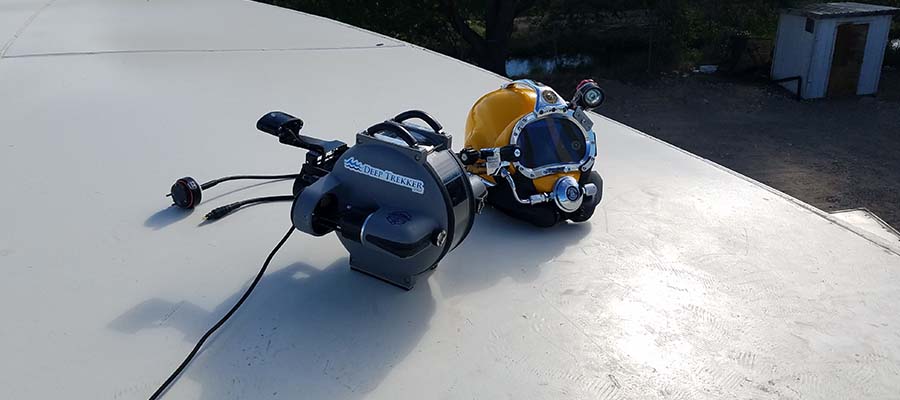
The responsibilities of commercial divers are multifaceted, contingent on the specific industry and task at hand. Operating within demanding conditions, these professionals navigate through deep waters, contend with limited visibility, and grapple with physically demanding scenarios. Their effectiveness hinges on specialized training, certifications, and experience to perform their duties effectively and safely.
Underwater Construction: Building Beneath the Surface
In underwater construction, commercial divers tackle a variety of tasks such as welding, cutting, and installing pipelines, contributing substantially to the maintenance and expansion of submerged assets and infrastructure. Divers may also be involved in tasks such as grouting, concrete placement, underwater surveying, and other specialized tasks related to underwater construction projects.
Inspections: Safeguarding Structural Soundness
The role of a commercial diver extends to the meticulous inspections of underwater assets and infrastructure, ranging from bridges to dams and piers, aquaculture farms, offshore platforms, and subsea cables. These inspection tasks are crucial for assessing the condition, integrity, and safety of underwater assets. Through underwater inspections, visual examinations, and non-destructive testing, divers accurately evaluate the structural integrity of submerged assets. Their inspections play a vital role in identifying potential risks, ensuring the safety of structures, and facilitating timely maintenance or repairs to mitigate any issues.
Salvage Operations: Retrieving From the Depths
Salvage jobs involve retrieving sunken vessels, recovering lost items, or extracting wreckage from underwater accidents or disasters. Commercial divers are often called upon to assist in these operations, where their expertise is invaluable in the recovery process of sunken or submerged objects. These salvage jobs involve a range of tasks, including assisting in the retrieval of lost items, lifting equipment by carefully securing rigging gear, such as slings, cables, or chains to the wreckage to facilitate safe lifting, and contributing to the overall success of the salvage mission.
Documentation: Capturing the Depths of Detail
Documentation is essential for maintaining a comprehensive record of underwater operations and ensuring effective communication with project stakeholders. These tasks include providing detailed reports, documenting inspection findings, and capturing imagery to accurately record their work underwater. Divers conduct inspections of underwater structures, and record any signs of damage, corrosion, or defects discovered during the inspection. They also document the environmental conditions encountered during the dive, such as water temperature, visibility, and underwater currents, accompanied by precise descriptions of the location and severity of observed issues, often complemented by photographs or sketches.
These inspection reports serve as official records of the dive and provide a reference for future analysis or decision-making. This helps to determine the necessary repair or maintenance actions, and can be used as references by engineers, project managers, and maintenance teams.
Equipment Maintenance: Ensuring Operational Integrity
Equipment maintenance is another important task in the day-to-day of a commercial diver. Regular checks of diving suits, breathing apparatus, and other gear is critical to their safety and ensures everything is in working order. Divers must examine their suit for any signs of wear, tears, or damage that could compromise its waterproofing capabilities, checking the seals, zippers, and closures. They also verify that the suit's insulation (such as neoprene or drysuit undergarments) is in good condition for thermal protection in cold water environments. After each dive, they clean and disinfect their gear thoroughly to remove saltwater, debris, and contaminants; and, adhere to proper drying and storage procedures to prevent the growth of mold or bacteria.
The Diverse Landscape of the Commercial Diving Industry
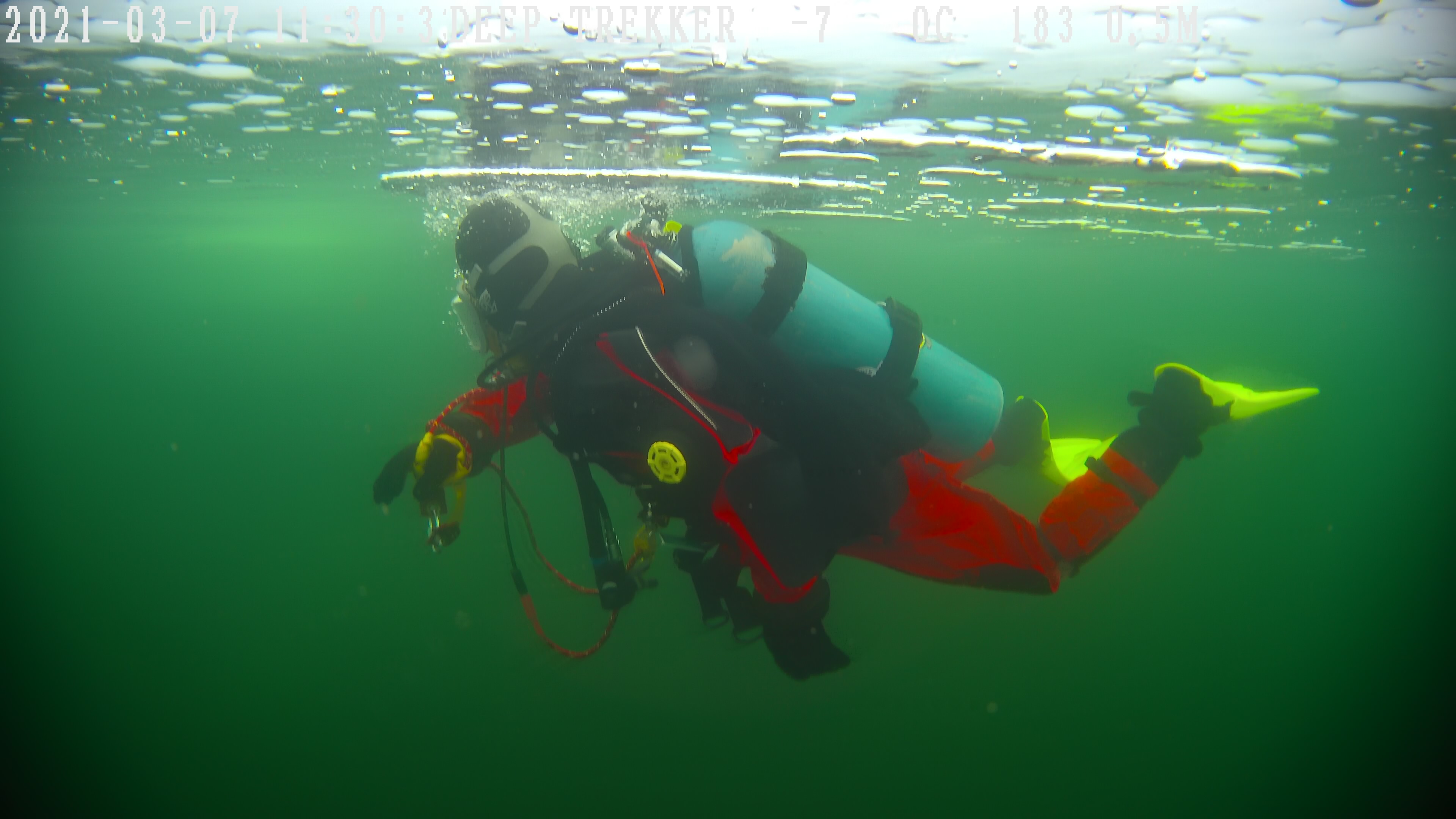
Commercial divers possess unique skills and expertise that allow them to work in a diverse range of industries requiring underwater operations. These highly trained professionals play a vital role in ensuring the safety, integrity, and efficiency of various sectors. From offshore oil and gas to marine construction, shipping and maritime, power generation, aquaculture, and scientific research, commercial divers play a pivotal role in executing crucial tasks such as inspections, maintenance, salvage operations, and construction initiatives in challenging underwater environments. Their ability to adapt their expertise to suit different industries positions them as invaluable assets, substantially contributing to the success and sustainability of underwater operations across a wide variety of sectors.
A few common industries commercial divers work in include:
Offshore
Divers are employed in offshore operations to perform various tasks, including underwater inspections, maintenance, repairs, and construction. They work in challenging environments such as oil rigs, pipelines, platforms, bridges, and offshore structures.
Their skills and expertise are utilized to inspect infrastructure, conduct underwater welding and cutting, install equipment, and assist in emergencies. Commercial diving is essential for ensuring the integrity and functionality of offshore installations while adhering to stringent safety procedures.
Civil Engineering
Commercial diving in civil engineering is an essential part of underwater construction and maintenance projects. Civil engineers employ commercial divers to perform tasks such as underwater inspections, water tank inspections, bridge and dam construction, underwater welding and cutting, and installation of underwater structures.
Divers play a principal role in ensuring the integrity and safety of underwater infrastructure, including bridges, piers, water tanks, and water treatment facilities. They utilize specialized equipment and techniques to carry out these tasks in challenging underwater environments, and require expertise in underwater construction methods.
Scientific Research
Scientists and researchers utilize commercial divers to conduct various tasks and gather valuable data in marine biology, oceanography, geology, and environmental studies. Commercial divers assist in underwater surveys, sample collection, installation and maintenance of scientific instruments and monitoring systems, as well as underwater photography and videography, photogrammetry, and 3D modeling.
They work closely with scientists to carry out research projects in diverse marine environments, including coral reefs, deep-sea habitats, and underwater caves. Commercial diving in scientific research enables scientists to gain insights into marine ecosystems, study marine species, and understand the impacts of human activities on the underwater environment.
Navigating the Hazards of Commercial Diving
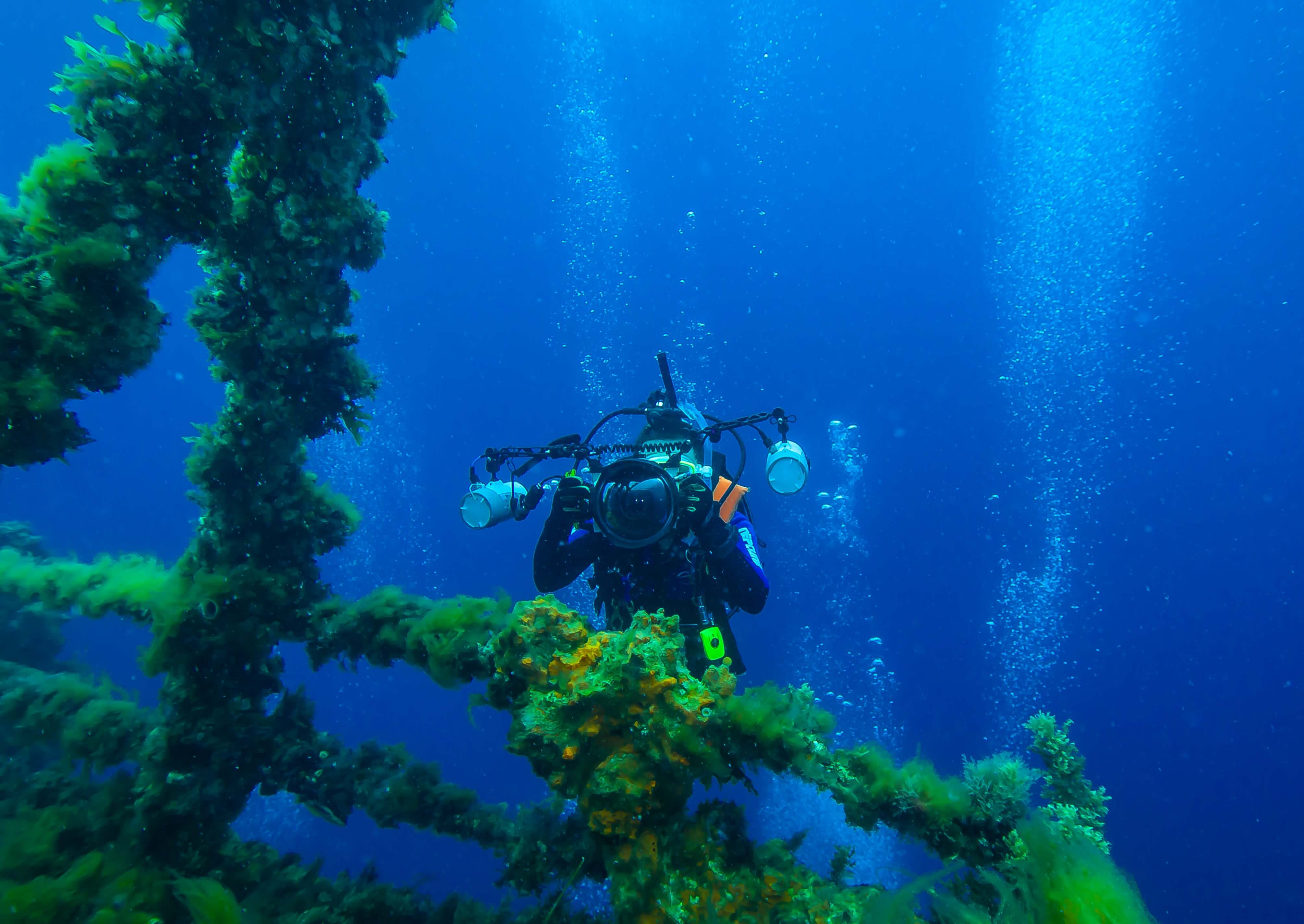
Commercial diving is a profession that requires working in the unpredictable depths of water, whether it be in offshore industries, civil engineering projects, or scientific research. While it can be an exciting and rewarding career, it is essential to acknowledge the inherent risks associated with commercial diving.
This occupation demands a unique set of skills, specialized equipment, and strict safety protocols to mitigate the potential dangers involved. From the dangers of decompression sickness and hazardous underwater conditions, to equipment failures and unpredictable marine life encounters, commercial divers face a range of risks that necessitate thorough training, meticulous planning, and constant vigilance to ensure their safety and well-being.
The Intricacies of Decompression Sickness
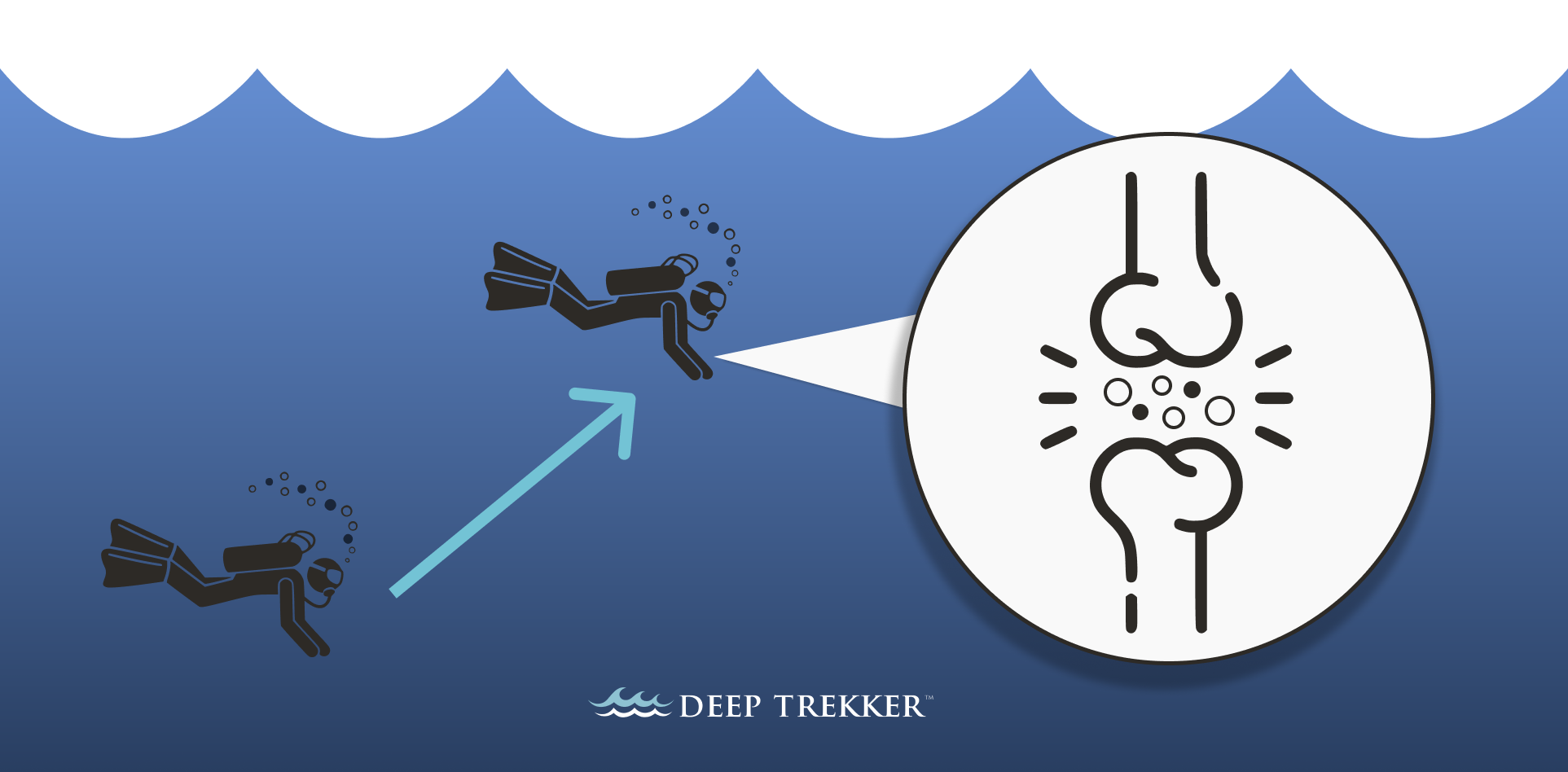
A common and significant risk involved in commercial diving is decompression sickness, also known as "the bends". This condition occurs when divers ascend too quickly from significant depths, causing dissolved gasses, such as nitrogen, to form bubbles in their body tissues.
This phenomenon can lead to various symptoms, including joint and muscle pain, dizziness, fatigue, numbness, and, in severe cases, paralysis or death. To mitigate this risk, commercial divers must follow strict decompression schedules and ascent rates, allowing their bodies to gradually release the excess nitrogen and prevent harm.
The Chill of Hypothermia
Another risk involved in commercial diving is hypothermia. Divers are exposed to cold water temperatures that can cause their body heat to rapidly dissipate, leading to a drop in core body temperature. Hypothermia can impair cognitive function and can cause confusion, decrease dexterity, and affect decision-making abilities, increasing the likelihood of accidents and injuries.
Prolonged exposure to cold water can even result in life-threatening situations. To combat this risk, commercial divers must wear appropriate thermal protection suits and equipment, such as drysuits or wetsuits, to minimize heat loss.
Consistent monitoring of body temperature, proper training in recognizing and managing hypothermia, and implementing warm-up procedures after diving are vital to preventing and addressing the effects of hypothermia during commercial diving operations.
The Silent Threat of Drowning
Drowning is a serious risk involved in commercial diving that requires exceptional attention and precautionary measures. The nature of the job places divers in an environment where they are dependent on their equipment for breathing and mobility.
Equipment failures, such as a malfunctioning regulator or a damaged air supply, can lead to an inability to breathe underwater, putting the diver at risk of drowning. Strong currents, entanglement hazards, insufficient training and planning, or unforeseen circumstances can also contribute to drowning incidents.
To reduce this risk, commercial divers undergo rigorous training and follow strict safety procedures. Regular equipment maintenance, pre-dive checks, thorough emergency response planning, and constant communication between divers and support teams are critical to reducing the risk of drowning in commercial diving operations.
Equipment Failure
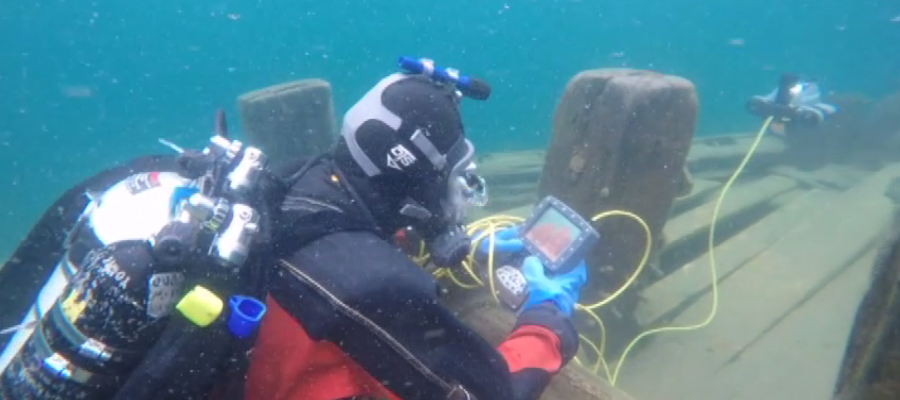
The reliability of diving equipment, including air supply systems, communication devices, and personal protective gear, is critical for the safety and well-being of divers. Malfunctioning equipment can lead to potentially life-threatening situations underwater.
For instance, a failure in the air supply system can result in a loss of breathing gas, causing a diver to suffocate. Communication failures can hinder effective coordination and response in emergencies. To avoid the risk of equipment failure, regular inspections, maintenance, and adherence to manufacturer guidelines are essential.
Divers should also be trained in equipment troubleshooting and have contingency plans in place to address unexpected failures during commercial diving operations.
Contaminated Surroundings
Divers may encounter hazardous substances such as toxic chemicals, pollutants, or biological agents that can negatively impact their health and safety. Contaminated water can lead to skin irritations, respiratory issues, or even poisoning that can cause systemic illnesses.
Additionally, working in polluted environments increases the risk of exposure to harmful substances through ingestion or inhalation. Proper hazard assessments and thorough site evaluations are necessary before diving operations begin to identify potential contaminants.
Implementation of appropriate safety measures such as personal protective equipment, decontamination procedures, and regular monitoring of water quality are essential to minimize the risks associated with contaminated surroundings during commercial diving activities.
Marine Life
Marine creatures such as sharks, stingrays, jellyfish, and venomous sea snakes can pose a threat to divers. Attacks or stings from these creatures can result in severe injuries, including bites, lacerations, venom poisoning, or allergic reactions.
Additionally, accidental disturbances to marine life can provoke defensive or territorial behavior, leading to further risks for divers. To circumvent these risks, commercial divers receive training in marine life identification and behavior, employ appropriate protective gear, and follow established practices for avoiding or handling encounters with potentially harmful marine species.
Maintaining a respectful distance from marine life and being aware of local wildlife hazards are key in ensuring diver safety.
Low Visibility
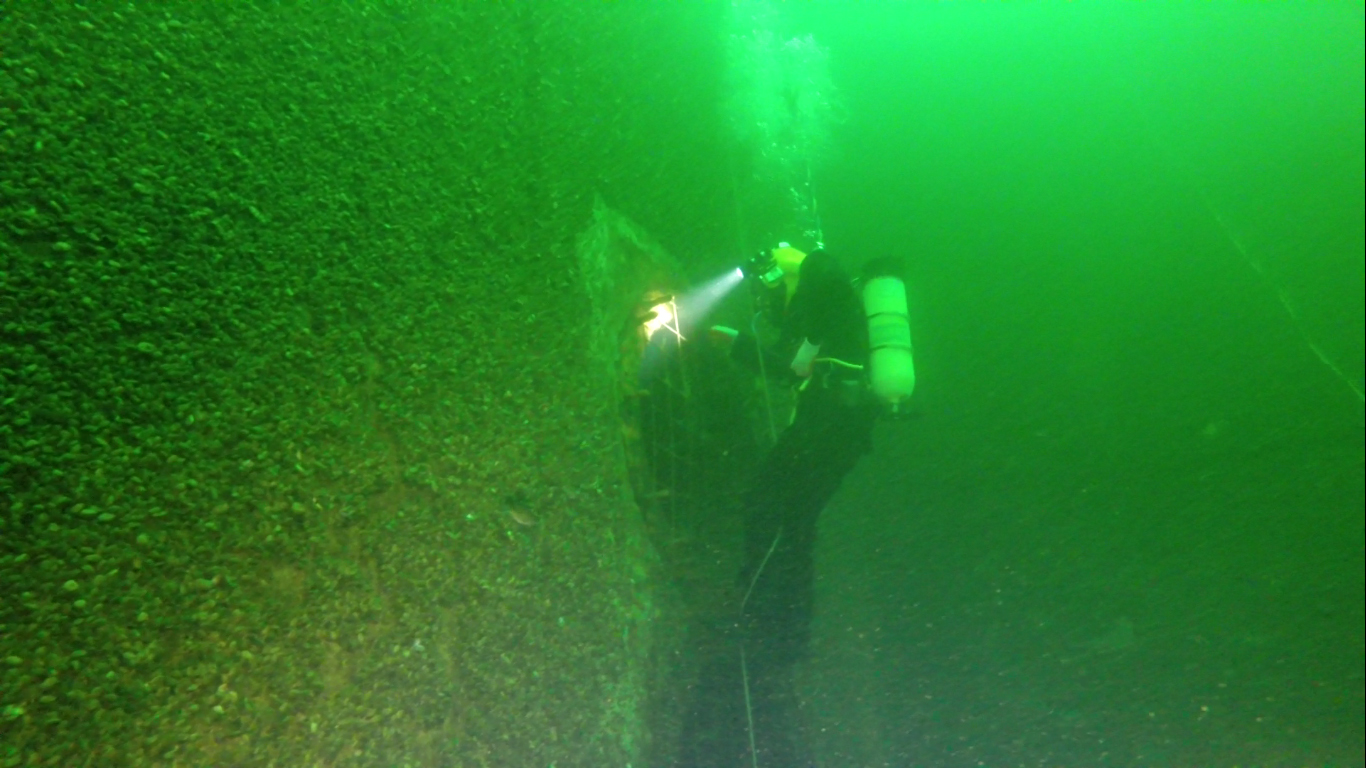
Factors such as murky water, silt, algae blooms, or poor lighting conditions can severely limit visibility, making it challenging for divers to navigate, locate equipment, or identify potential hazards and obstacles.
Limited visibility increases the risk of entanglement, collisions with structures, or disorientation underwater, increasing the risk of getting lost. Furthermore, it hampers effective communication and coordination with support teams on the surface.
To address this risk, divers utilize underwater lights, specialized visibility-enhancing equipment, such as ROV-mounted sonar, and techniques such as tethering or buddy systems to maintain contact and ensure safety. Proper planning, thorough situational awareness, and adaptability are essential to reduce the risks associated with low visibility in commercial diving operations.
How Can Diving Safety Be Improved
Diver safety is of paramount importance in all aspects of commercial diving, including offshore industries, civil engineering projects, scientific research, aquaculture, and recreational diving. The inherent risks involved in underwater operations necessitate a continuous effort to enhance safety measures and mitigate potential dangers.
To improve diver safety, a multi-faceted approach is required, encompassing comprehensive training, rigorous equipment maintenance, thorough risk assessments, comprehensive training, proper use of personal protective equipment, and regular health and safety assessments.
By implementing these measures and fostering a proactive approach to safety, the diving industry can strive towards creating a safer environment for divers and minimizing the risks associated with underwater operations.
Protective Equipment
Protective gear can significantly reduce the risks associated with commercial diving operations, with the ability to withstand temperatures, water pressure, and toxic chemicals. Wetsuits, drysuits, and exposure suits can provide better insulation, preventing hypothermia and maintaining diver comfort in cold water environments; and, durable and puncture-resistant materials for gloves, boots, and hoods can protect divers from sharp objects and marine life encounters.
The integration of advanced helmet designs with built-in communication systems and adjustable lighting can also enhance diver communication and visibility underwater. Additionally, the use of high-visibility colours and reflective materials on equipment can improve diver visibility, reducing the chances of accidents and facilitating rescue operations.
It’s also important for divers to have back ups of their equipment, in the case of unforeseen malfunction or accidental damage during operations.
Detailed Planning
Thorough dive planning ensures that potential risks and hazards are identified, and appropriate safety measures are implemented. It involves considering factors such as dive objectives, site conditions, water depth, bottom time, decompression requirements, and any emergency procedures.
By incorporating these elements into the planning process, divers can anticipate and avoid potential risks before they arise. Detailed planning also involves establishing communication protocols, including surface-to-diver and diver-to-diver communication systems, to maintain constant contact and enable prompt response in case of emergencies.
Conducting pre-dive briefings, reviewing contingency plans, and regularly updating dive strategies based on changing conditions also contribute to a safer diving environment. Through meticulous planning, divers and support teams can proactively address safety concerns, enhance situational awareness, and minimize risks associated with commercial diving operations.
Comprehensive Training
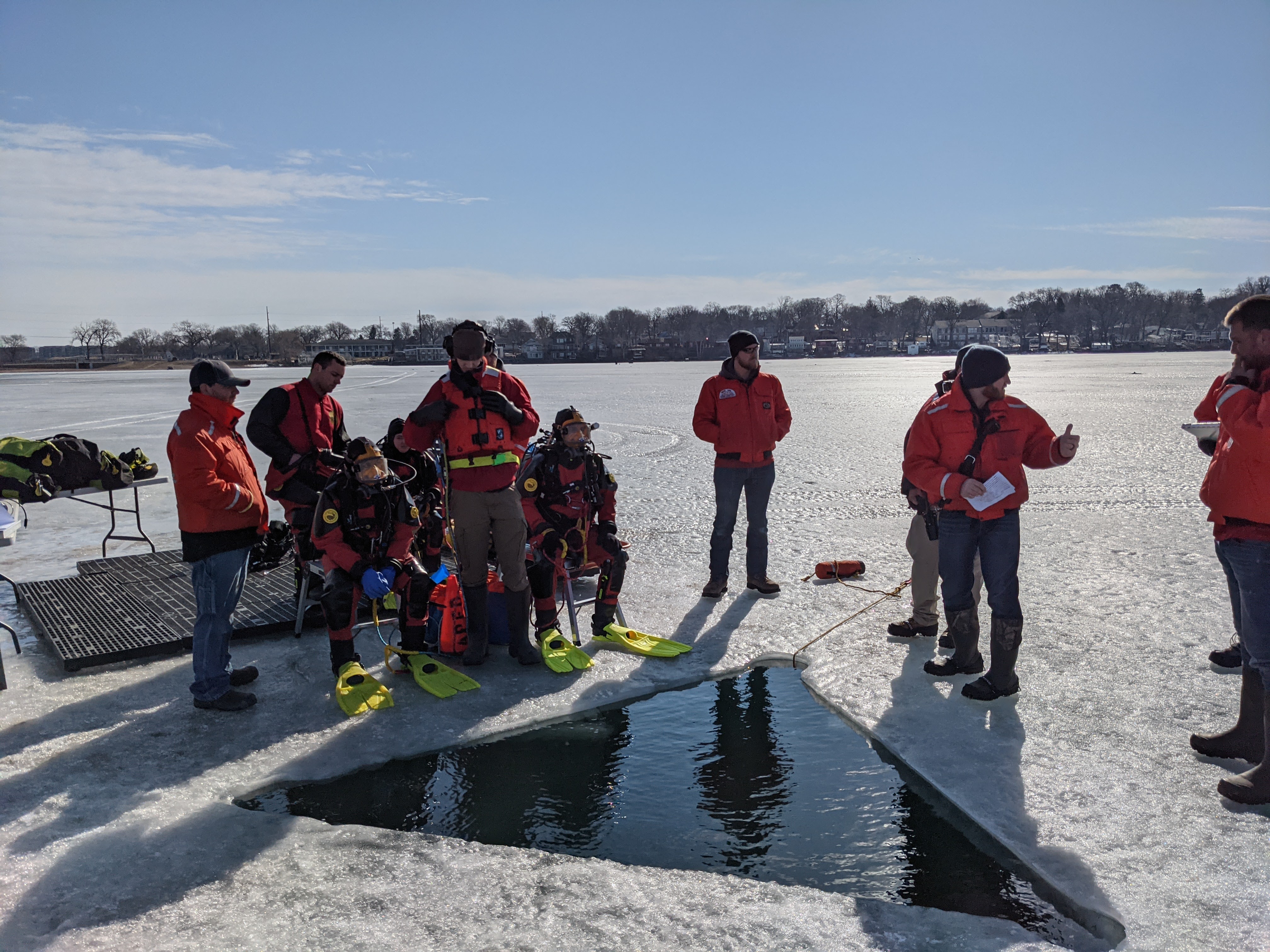
By providing divers with thorough and up-to-date training, their knowledge and skills are enhanced, enabling them to navigate potential risks and respond effectively to emergencies. Training programs should cover essential topics such as dive techniques, equipment operation, emergency procedures, risk assessment, and problem-solving skills.
Emphasizing safety protocols, such as proper ascent and descent rates, gas management, and buddy system practices is critical. Incorporating real-world exercises and simulated scenarios into training sessions allows divers to develop practical experience and decision-making abilities in a controlled environment.
Ongoing training and refresher courses also help divers stay current with best practices and advancements in diving safety. By investing in comprehensive training, the diving industry can ensure that divers are well-prepared to handle various situations and contribute to a safer diving environment.
Safety Regulations
Diving safety requires the establishment and enforcement of comprehensive safety regulations. These regulations should be developed by industry experts, government bodies, and relevant organizations to ensure uniform standards and practices across the diving industry. Safety regulations should cover a variety of details, including equipment requirements, minimum training requirements and certification standards, underwater time limitations, dive planning protocols, emergency response procedures, and workplace safety guidelines.
Regular audits and inspections should also be conducted to verify compliance with these regulations. Additionally, collaboration between industry stakeholders, including divers, employers, regulatory bodies, and training institutions is imperative to continuously review and update safety regulations based on evolving technologies, best practices, and lessons learned from incidents.
Equipment Maintenance
Proper maintenance ensures that diving equipment operates reliably and minimizes the risk of equipment failures during dives. This includes regular inspections, servicing, and adherence to manufacturer guidelines. Equipment should be routinely checked for signs of wear, damage, or deterioration, and any faulty or compromised components should be promptly repaired or replaced.
Establishing a robust maintenance schedule, documenting maintenance activities, and keeping detailed records of equipment history are essential for tracking and managing equipment reliability. Divers and support teams should also be trained in basic equipment troubleshooting and familiarized with emergency procedures related to equipment malfunctions.
Elevating Dive Safety Through ROV Innovation

ROVs (Remotely Operated Vehicles) have revolutionized the diving industry by providing an innovative solution to enhance dive safety. These unmanned underwater vehicles are equipped with advanced HD cameras, sensors, and manipulators, allowing them to perform tasks that traditionally required human divers to undertake.
By utilizing ROVs, dive safety can be significantly improved in many ways. ROVs eliminate the need for divers to undertake high-risk activities, such as deep dives, working in hazardous environments, or dealing with extreme temperatures. They can access areas that are difficult or unsafe for human divers, which reduces the potential for accidents and injuries.
Additionally, ROVs enable continuous monitoring, precise inspections, and data collection, facilitating accurate risk assessments and informed decision-making. Overall, the integration of ROVs into diving operations holds immense potential for strengthening dive safety and ensuring the well-being of divers.
Improved Visibility with ROVs
Equipped with enhanced 4K cameras, powerful LED floodlights, and imaging sonar, Deep Trekker ROVs can provide crystal clear, detailed visual information in virtually any underwater environments. This ultra high-resolution visibility allows operators to conduct more accurate inspections, assess potential hazards, and identify structural weaknesses and potential hazards without the limitations of human vision.
By eliminating the constraints of low visibility, such as murky water or poor lighting conditions, by using integrated sonar imaging, Deep Trekker ROVs enable better situational awareness for dive teams and support personnel in virtually any environment.
Operators can make informed decisions, plan safer routes, and detect potential dangers in real-time. The improved visibility provided by ROVs significantly reduces the risk of accidents, collisions, or entanglements, ultimately improving dive safety, as well as the efficiency and accuracy of searches and inspections.
Extended Operation Time

Unlike human divers who have limited bottom time due to physiological constraints, ROVs can operate for extended durations without the dangers associated with dive teams. This increased operational endurance allows for more comprehensive inspections, surveys, and maintenance tasks to be carried out without the time pressure faced by divers.
The unlimited bottom time of ROVs also means reduced risks involved in sending divers into hazardous environments like extreme depths, strong currents, and areas with high levels of contamination. ROVs can also access confined spaces or areas with limited visibility which can be unsafe for divers, allowing for much more thorough searches and inspections.
By utilizing ROVs, dive teams can accomplish complex tasks over longer periods, reducing the need for repetitive dives and minimizing the associated risks. This extended operation time also enables operators to respond effectively to unforeseen circumstances or emergency situations, enhancing overall dive safety.
Real-Time Monitoring with ROVs
Equipped with advanced sensors such as sonar, and enhanced 4K cameras, Deep Trekker ROVs can provide live video feeds and data from the underwater environment to operators on the surface. This real-time monitoring allows for continuous observation of dive operations, including the assessment of potential risks, early identification of hazards, and tracking of diver movements.
Operators can closely monitor dive conditions, environmental changes, and any emerging safety concerns in real time. This immediate feedback enables prompt decision-making and timely intervention in case of emergencies or evolving situations.
Real-time monitoring provided by ROVs enhances situational awareness, mitigates risks, and ensures that safety protocols can be adjusted swiftly, contributing to overall dive safety.
Documentation
With enhanced 4K cameras and recording capabilities, Deep Trekker ROVs can capture high-resolution imagery and video footage of underwater operations in real-time. This documentation serves as a valuable tool for dive safety analysis, incident investigations, maintenance planning, and training purposes. It allows for a thorough review of dive procedures, equipment performance, and potential safety concerns.
High quality imagery can be valuable in post-dive analysis and investigation. By documenting dive operations, operators can identify areas for improvement, detect trends in safety performance, and implement corrective measures. The recorded footage can also be used to train divers, enhancing their situational awareness and promoting adherence to safety protocols.
Also, with integrations such as Deep Trekker’s BRIDGE and Mission Planner software, operators can gather comprehensive data while the ROV autonomously follows a planned mission route, unlocking valuable insights with advanced data capture and enhanced reporting capabilities.

Assist Divers
Deep Trekker ROVs have the capability to conduct comprehensive safety surveys before sending a diver underwater, increasing dive safety. By utilizing underwater ROVs, dive teams can efficiently identify potential risks such as protruding branches or wires that divers could get snagged on, allowing for preemptive measures to prevent incidents.
Additionally, the ROV survey provides a clear understanding of the dive site, enabling divers to familiarize themselves with the environment and identify any confined or hazardous spaces to avoid or plan for. This pre-check ensures that teams are well-prepared, allowing for efficient planning, arrangement of appropriate equipment, and accurate cost estimates.
During the dive, the ROV enables remote monitoring of the divers, ensuring their safety and providing valuable footage that can be shared as a firsthand account of the completed work. This footage also serves as a valuable resource for training and reviewing purposes post-dive.
Keep Tanks in Action
Using an underwater ROV eliminates the need to shut down operations or undergo time-consuming and costly dewatering procedures during inspections. With the assistance of ROVs, operators can safely conduct inspections without putting divers at risk.
This approach ensures that operations can continue smoothly and uninterrupted while minimizing the impact on both time and budget. By leveraging the capabilities of ROVs, inspections can be completed efficiently and safely, providing a practical solution that benefits overall operations and financial considerations.
Straightforward SchedulingUnlike human divers, ROVs are not limited by physiological constraints or dive tables. They can be deployed as needed, without the need for complex scheduling based on dive times, surface intervals, weather, and decompression requirements.
This flexibility allows for efficient planning and execution of dive operations, ensuring that tasks can be completed within designated timeframes. It also minimizes the risk of divers exceeding their limits or feeling rushed, which can lead to errors or compromised safety.
With an ROV, users can get in the water in minutes - without waiting to schedule and coordinate with busy dive teams. By utilizing ROVs, dive teams can optimize their schedules, allocate resources effectively, and prioritize dive safety without the constraints imposed by traditional dive scheduling requirements, saving both time and money.
Deep Trekker ROVs: Elevating Diver Safety and Efficiency
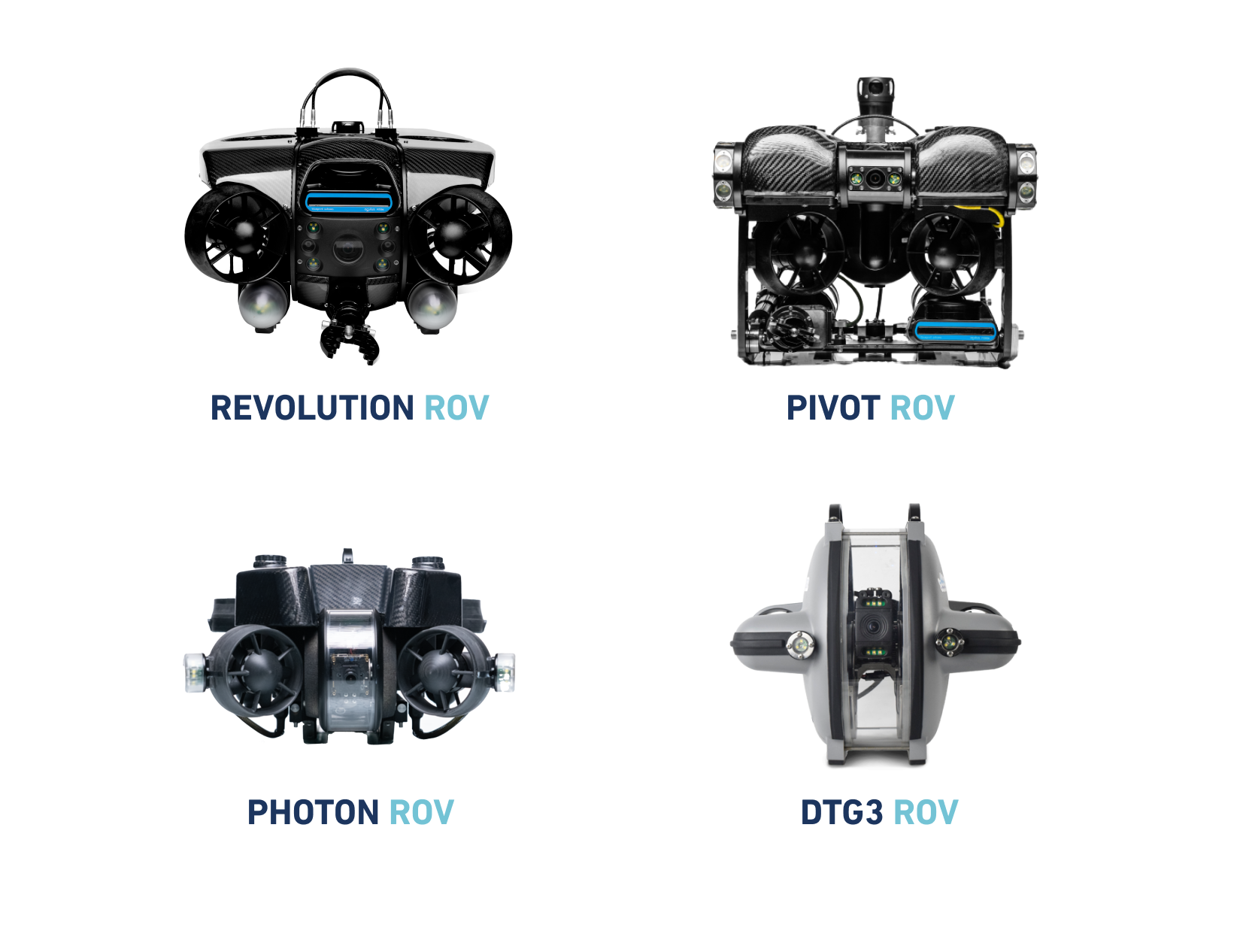
Deep Trekker ROVs are essential tools for enhancing safety in diving operations, offering a range of features and add-ons to support dive teams. They excel in tasks such as salvage operations, hull inspections, preliminary dive site assessments, and providing live video feeds for diver safety.
Versatility and Customization: The ROV Lineup
Deep Trekker's diverse fleet of submersible ROVs is a testament to both adaptability and customization. With four submersible ROVs: DTG3, PIVOT, REVOLUTION, and PHOTON models, these ROVs offer a variety of approaches to different operational demands. They are exceptionally portable, running on long-lasting lithium-ion batteries, enabling effortless transport and deployment, even in remote and challenging locations. Whether it's about achieving compact agility or enhanced stability, Deep Trekker has harnessed the technological prowess to offer a tailored solution for every underwater mission.
Unveiling the Deep Trekker Advantages
Deep Trekker ROVs are more than just tools; they are the embodiment of advanced engineering. Designed with rugged construction in mind, our ROVs are built using industrial-grade materials like stainless steel, anodized machined aluminum, and carbon fiber protection. This composition culminates in a robust yet lightweight construction that thrives in the most challenging underwater environments, making these ROVs resilient sentinels, capable of tackling demanding conditions with unwavering resolve.
Portability Redefined: Power in Motion
Deep Trekker ROVs offer increased operational capability by providing flexible power options, such as topside direct power, which allows for unlimited operation time. With their reliable power sources and convenient portability, they offer exceptional flexibility and efficiency in various underwater applications.
Illuminating the Depths: Vision Beyond Ordinary
Deep Trekker ROVs are also equipped with an array of cutting-edge features, including enhanced 4K cameras, powerful LED lights for precise navigation and crystal clear visibility in underwater environments, manipulators, and optional integrated sonar systems, enabling efficient underwater mapping and target identification. Additionally, sophisticated positioning and stabilization systems ensure accurate tracking and steady operation, allowing for exceptional performance in challenging underwater scenarios.
Partnering for Excellence: Expert Guidance at Your Fingertips
With their outstanding features, Deep Trekker ROVs deliver unparalleled performance and reliability in demanding environments, with a BRIDGE integrated controller that assists divers in assessing surroundings.
The DTG3 is a compact mini observation-class ROV, while the PIVOT and REVOLUTION offer enhanced maneuverability, stability, and payload capabilities. The PHOTON is a tough, lightweight option with advanced capabilities and payload options. These ROVs provide convenience, durability, and versatility for commercial diving operations.
If you require assistance in selecting the right technology for your specific missions, reach out to our team of robotics experts. We can guide you in finding the ideal ROV model that suits your applications and budget. Contact us today to receive a custom quote tailored to your needs.